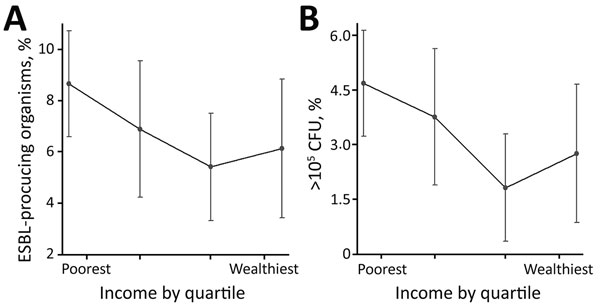Volume 24, Number 8—August 2018
Research
Poverty and Community-Acquired Antimicrobial Resistance with Extended-Spectrum β-Lactamase–Producing Organisms, Hyderabad, India
Figure 2

Figure 2. Nonparametric relationships between significant bacterial growth in urine culture and income (A) and between community-acquired antimicrobial resistance with ESBL and income (B) for pregnant women in Hyderabad, India, adjusted for respondent age, education level, income, religious background, hospitalization in previous 12 months, and previous abortion. Dots indicate adjusted mean predicted outcome; error bars indicate 95% CIs. Tick marks along baselines indicate quartiles of income. ESBL, extended-spectrum β-lactamase.
Page created: July 17, 2018
Page updated: July 17, 2018
Page reviewed: July 17, 2018
The conclusions, findings, and opinions expressed by authors contributing to this journal do not necessarily reflect the official position of the U.S. Department of Health and Human Services, the Public Health Service, the Centers for Disease Control and Prevention, or the authors' affiliated institutions. Use of trade names is for identification only and does not imply endorsement by any of the groups named above.